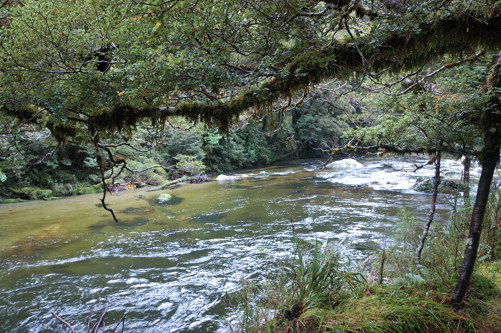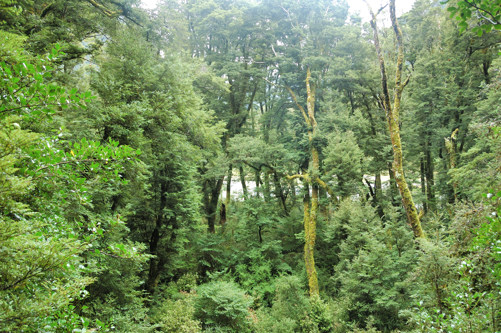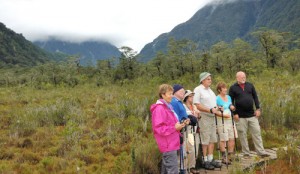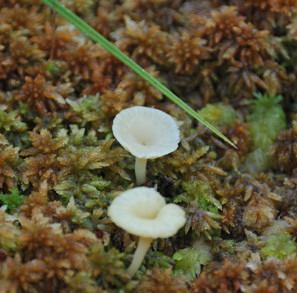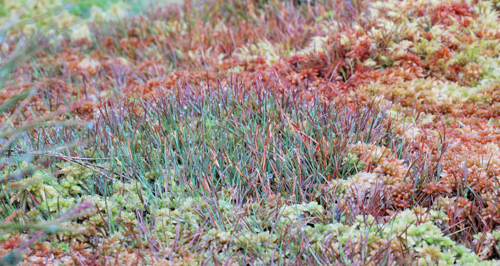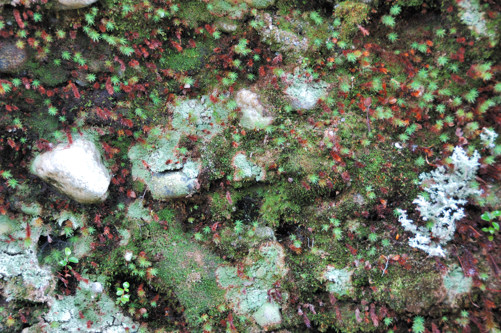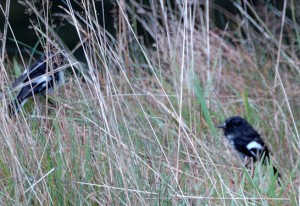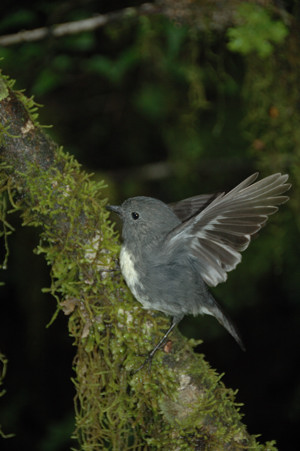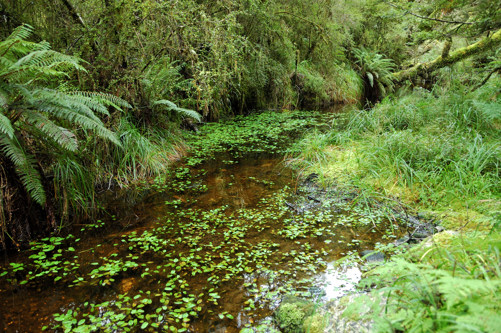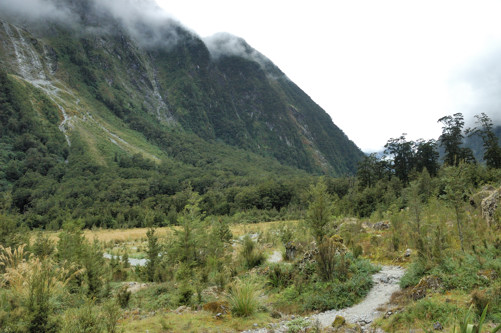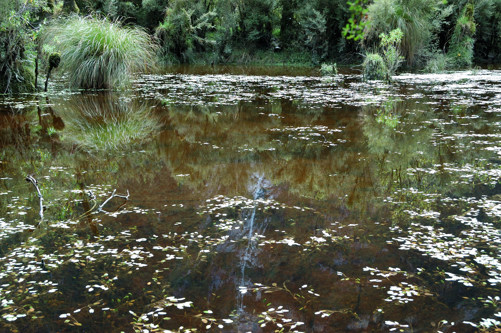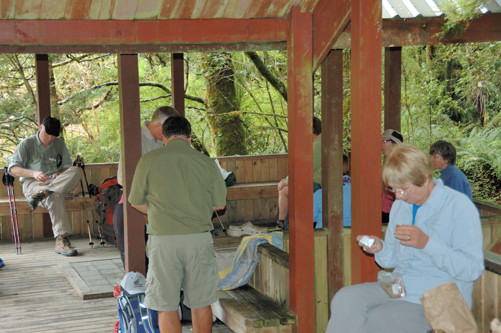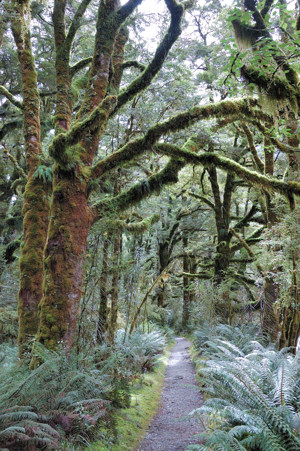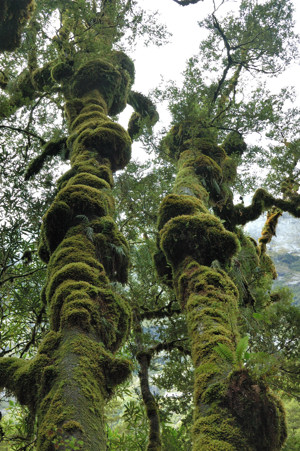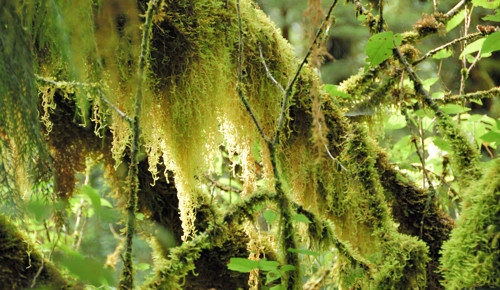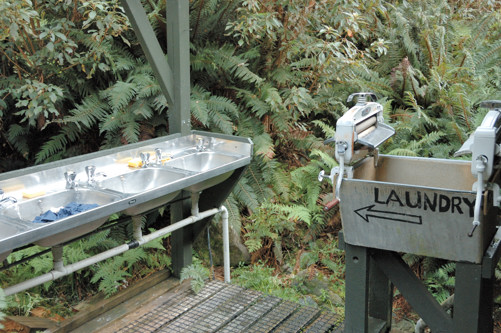Note to readers: Several of you have noted that you could not post comments because of a permissions problem. Nina has now fixed that. Your comments are most definitely welcome!
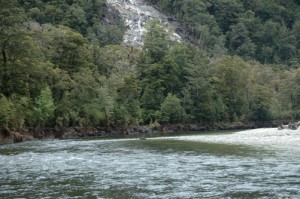 Today we have our first real hike. It is ten miles long but not particularly hard since the track is generally quite good and we only do several hundred feet of elevation gain. This entire day we will be walking along the Clinton River, having started walking along it yesterday at Lake Te Anau, where it is broad and calm as it also is at Glade House.
Today we have our first real hike. It is ten miles long but not particularly hard since the track is generally quite good and we only do several hundred feet of elevation gain. This entire day we will be walking along the Clinton River, having started walking along it yesterday at Lake Te Anau, where it is broad and calm as it also is at Glade House.
Today we observe it diminishing and become more wild as we head up towards its headwaters at Milford Pass.
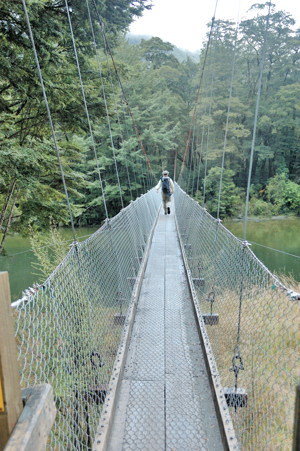 The first thing we must do, however, is to cross from the right to its left bank on a long suspension bridge. A bridge was first built at this location in 1909; however, there have been several since then because the river enjoys washing them away.
The first thing we must do, however, is to cross from the right to its left bank on a long suspension bridge. A bridge was first built at this location in 1909; however, there have been several since then because the river enjoys washing them away.
Most of today’s hike is through lush forest of Mountain and Silver beech trees like that in the photo below.
However, about two miles along the track there is a side path available to a glorious wetland marsh. Here are several of our group on the boardwalk that has been built to protect this fragile area.
Below, without further comment are some of the photos that I took of this area.
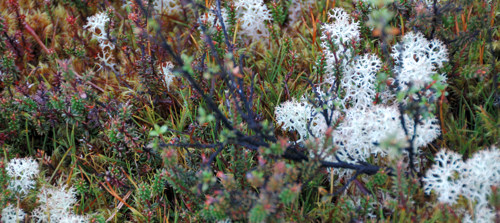
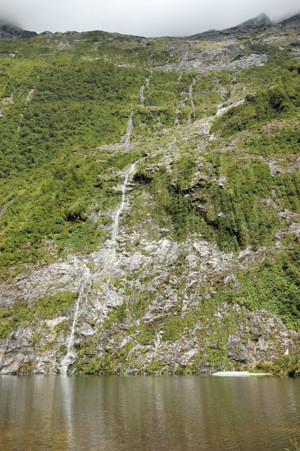 Part of what makes the scenery so magnificent is that we are walking in what the pioneers called the Valley of the Perpendicular with rock walls on both sides towering above us over 4000 feet.
Part of what makes the scenery so magnificent is that we are walking in what the pioneers called the Valley of the Perpendicular with rock walls on both sides towering above us over 4000 feet.
Also adding variety to this walk are the many birds. Mostly we could just hear them. I particularly like the Tui and the Bellbirds. Some we could also see, such as these Tomtits (Petroica macrocephala) on the left, and the South Island Bush Robin (Petroica australis) on the right that I could not identify.
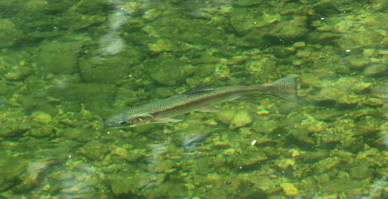 And, of course, the river was filled with fish. Here is a rainbow trout over two feet long; one of many that I felt I might be able to just reach into the river and grab or perhaps spear with my hiking pole. I also got a picture of a four foot long eel, but since it is difficult to see, I haven’t reproduced it here.
And, of course, the river was filled with fish. Here is a rainbow trout over two feet long; one of many that I felt I might be able to just reach into the river and grab or perhaps spear with my hiking pole. I also got a picture of a four foot long eel, but since it is difficult to see, I haven’t reproduced it here.
This is a beautiful creek flowing into the main river.
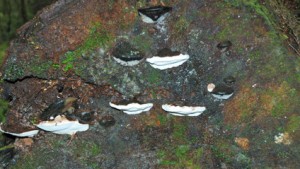 Here are fungi and mosses growing on the end of a fallen tree trunk.
Here are fungi and mosses growing on the end of a fallen tree trunk.
What is missing in the picture below? Give yourself a gold star if you noticed the absence of trees. I mentioned how steep the walls on either side of this valley are. These steep, high walls lead to large, powerful avalanches that literally blast the trees from the landscape.
The photo below shows Hidden Lake that was created in this way.
About 6 miles into this day’s hike, a shelter has been provided where we could stop for lunch.
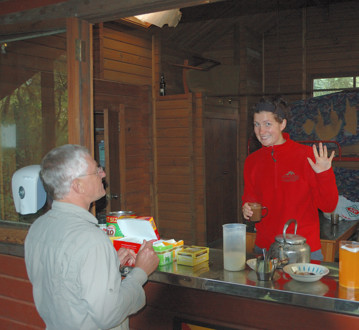 One reason for the shelter is that it provides a location for our guides to share their enthusiasm – this is Jess who was always upbeat – as well as hot and cold drinks.
One reason for the shelter is that it provides a location for our guides to share their enthusiasm – this is Jess who was always upbeat – as well as hot and cold drinks.
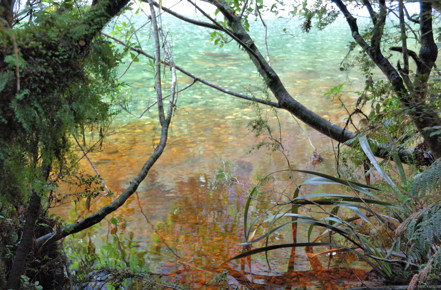 Later, we came to this spot where a creek, draining a peat filled bog is adding its tannin colored waters to the beautiful blue-green water of the Clinton.
Later, we came to this spot where a creek, draining a peat filled bog is adding its tannin colored waters to the beautiful blue-green water of the Clinton.
Despite the lushness of the forest, most of the soil along the track is actually thin and not overly fertile. Red Beeches grow where the soil is better. Here is a particularly large stand of them. These are fast growing and relatively short lived trees. Their trunks always seem to be heavily covered in moss.
There was also usually moss gorgeously draping their branches.
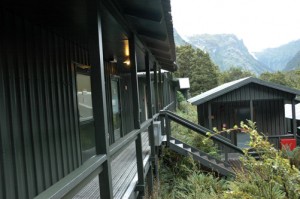 At the end of the day’s hike we reach Pompolona Lodge. The origin of this name is interesting. The track we have been following was first discovered and opened up by Quintin Mackinnon, after whom the pass we are approaching was named, and his partner Ernest Mitchell. After opening up the pass to Sunderland Falls and Milford Sound, Mackinnon spent the rest of his life leading groups into the area. In the early days, these hikes took much longer and were more treacherous. It was not uncommon for these hikers to be hut bound for several days at a time by the weather. Mackinnon did his best to keep these groups happy by feeding them the meat of the Kaka, a native parrot, pigeon stew, and his famous pompolonas, scones made from mutton fat candles.
At the end of the day’s hike we reach Pompolona Lodge. The origin of this name is interesting. The track we have been following was first discovered and opened up by Quintin Mackinnon, after whom the pass we are approaching was named, and his partner Ernest Mitchell. After opening up the pass to Sunderland Falls and Milford Sound, Mackinnon spent the rest of his life leading groups into the area. In the early days, these hikes took much longer and were more treacherous. It was not uncommon for these hikers to be hut bound for several days at a time by the weather. Mackinnon did his best to keep these groups happy by feeding them the meat of the Kaka, a native parrot, pigeon stew, and his famous pompolonas, scones made from mutton fat candles.
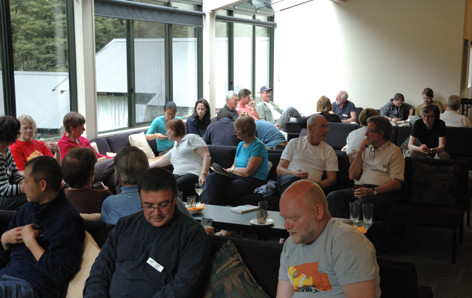 Here is most of our group relaxing before dinner in the lounge area of the lodge. At one point on the track there are historical photos of Mackinnon’s lodge. It was small, dark, and smoke filled, with bunks constructed from small tree trunks. A far cry from this.
Here is most of our group relaxing before dinner in the lounge area of the lodge. At one point on the track there are historical photos of Mackinnon’s lodge. It was small, dark, and smoke filled, with bunks constructed from small tree trunks. A far cry from this.
Of course, we still had to rough it some small ways. Here are the sinks provided for clothes washing – of course we actually got to wash clothes. There were also wonderful drying rooms heated by a heat exchanger on the exhaust from the generators.
